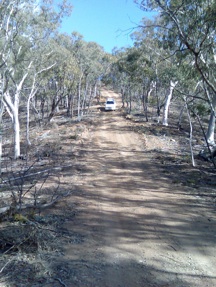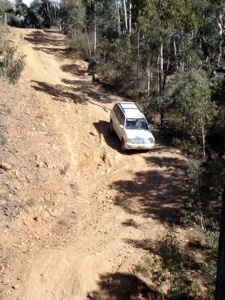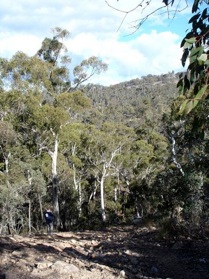tackling different terrains

steep hills
Driving on very steep hills holds several dangerous factors.
The steeper he hill, the faster it allows water to run off after rain. This in turn leads to fairly severe erosion and deep ruts. These ruts are usually deeper than your wheel travel can cope with, making the diagonal wheel problem much more pronounced.







The surface of the most steep hills is commonly loose dry dirt, which makes it difficult to get good traction.
Driving uphill, much of the vehicle's weight transfers to the rear, reducing the effectiveness of the front driving wheels.
EXTREME CAUTION should be used when negotiating very steep hills.
NEVER, EVER, drive across a steep hill at an angle, especially to cross a rut. As the rear wheel falls into the rut, it will pickup the front wheel and lift the entire car, possibly past the balancing point.
There should only be one vehicle attempting steep hill climbs at a time and the next vehicle should not begin until the previous one is clear.
Recovery operations on steep hills are difficult enough without stray vehicles stuck halfway because the vehicle in front can't move.
Should you lose traction, it is vital you employ the stall technique. Don't use the clutch!
Treat steep hills with the greatest respect.
Abercrombie NP is well known for it’s long and steep hills.


SRODRV001B/04 USE THE FEATURES OF A 4WD TO DRIVE A VARIETY OF TERRAIN TYPES
PERFORMANCE CRITERIA 04h

